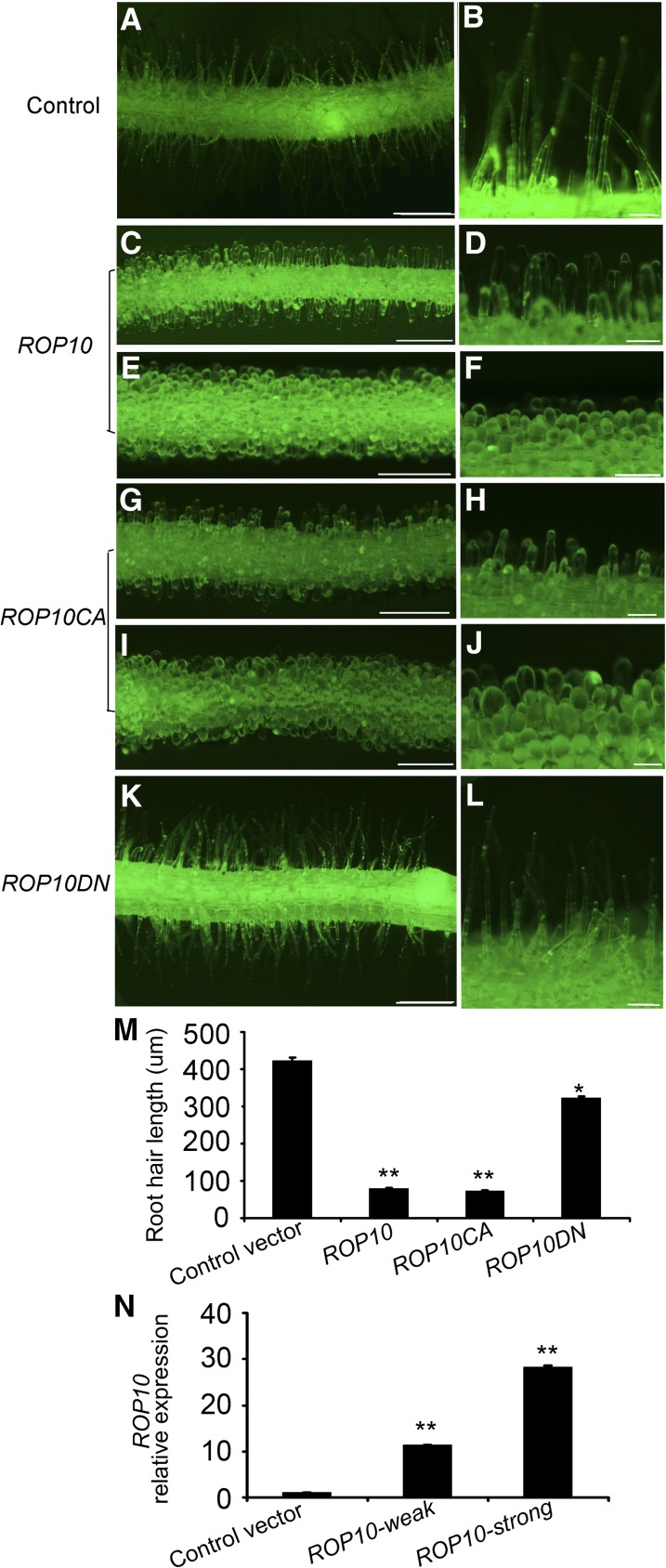Figure 1.
Root Hair Phenotypes of Transformed M. truncatula Roots Overexpressing ROP10 and ROP10CA or ROP10DN.
(A) and (B) Roots harboring the empty vector showed normal tip growth of root hairs.
(C) to (F) Roots overexpressing ROP10 produced root hairs with weakly ([C] and [D]) to strongly ([E] and [F]) depolarized growth.
(G) to (J) Roots overexpressing ROP10CA produced short swollen root hairs ([G] and [H]) as well as completely ballooning root hairs ([I] and [J]).
(K) and (L) Roots overexpressing ROP10DN produced short root hairs with almost normal tip growth.
About 120 composite plants were obtained for each construct in each experiment, and over 40% of composite plants generated transformed roots. The hairy root transformation experiment for each construct was repeated at least five times. Bars in (A), (C), (E), (G), (I), and (K) = 500 µm; bars in in (B), (D), (F), (H), (J), and (L) = 100 µm.
(M) Quantitative analysis of the average length of root hairs in transformed roots overexpressing the indicated proteins. Ten root hair cells were measured per transformed root, and 15 transformed roots were scored. Error bars indicate se. Statistical significance (*P < 0.05, **P < 0.01) was evaluated by Student’s t test.
(N) Quantitative RT-PCR of ROP10 mRNA levels in transformed roots overexpressing ROP10 that showed weakly depolarized root hairs (ROP10-weak) and strongly depolarized root hairs (ROP10-strong). Statistical significance (**P < 0.01) was evaluated by Student’s t test. Error bars indicate se. Data presented are representative of three independent experiments.

